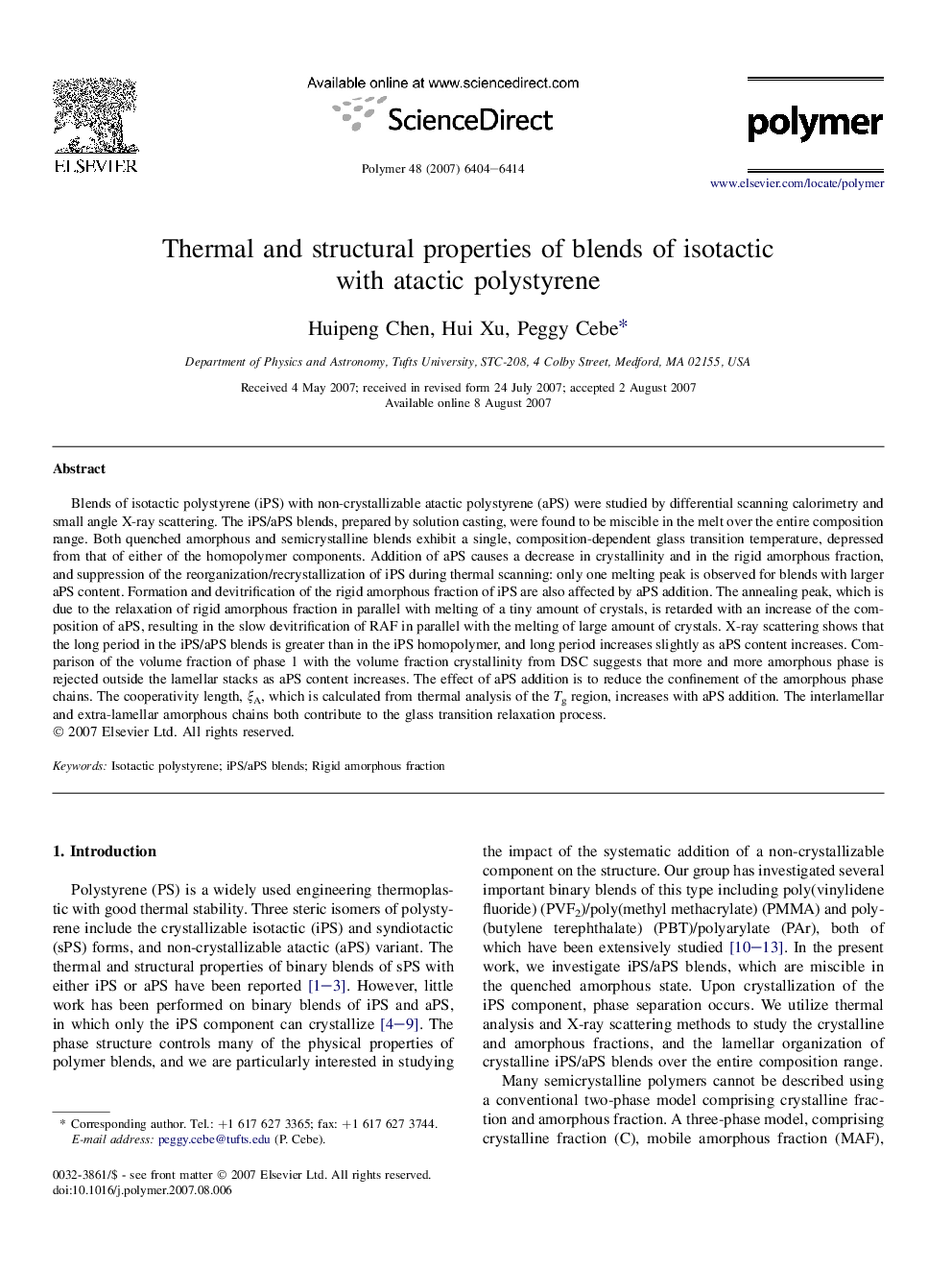| کد مقاله | کد نشریه | سال انتشار | مقاله انگلیسی | نسخه تمام متن |
|---|---|---|---|---|
| 5188534 | 1381158 | 2007 | 11 صفحه PDF | دانلود رایگان |
عنوان انگلیسی مقاله ISI
Thermal and structural properties of blends of isotactic with atactic polystyrene
دانلود مقاله + سفارش ترجمه
دانلود مقاله ISI انگلیسی
رایگان برای ایرانیان
موضوعات مرتبط
مهندسی و علوم پایه
شیمی
شیمی آلی
پیش نمایش صفحه اول مقاله

چکیده انگلیسی
Blends of isotactic polystyrene (iPS) with non-crystallizable atactic polystyrene (aPS) were studied by differential scanning calorimetry and small angle X-ray scattering. The iPS/aPS blends, prepared by solution casting, were found to be miscible in the melt over the entire composition range. Both quenched amorphous and semicrystalline blends exhibit a single, composition-dependent glass transition temperature, depressed from that of either of the homopolymer components. Addition of aPS causes a decrease in crystallinity and in the rigid amorphous fraction, and suppression of the reorganization/recrystallization of iPS during thermal scanning: only one melting peak is observed for blends with larger aPS content. Formation and devitrification of the rigid amorphous fraction of iPS are also affected by aPS addition. The annealing peak, which is due to the relaxation of rigid amorphous fraction in parallel with melting of a tiny amount of crystals, is retarded with an increase of the composition of aPS, resulting in the slow devitrification of RAF in parallel with the melting of large amount of crystals. X-ray scattering shows that the long period in the iPS/aPS blends is greater than in the iPS homopolymer, and long period increases slightly as aPS content increases. Comparison of the volume fraction of phase 1 with the volume fraction crystallinity from DSC suggests that more and more amorphous phase is rejected outside the lamellar stacks as aPS content increases. The effect of aPS addition is to reduce the confinement of the amorphous phase chains. The cooperativity length, ξA, which is calculated from thermal analysis of the Tg region, increases with aPS addition. The interlamellar and extra-lamellar amorphous chains both contribute to the glass transition relaxation process.
ناشر
Database: Elsevier - ScienceDirect (ساینس دایرکت)
Journal: Polymer - Volume 48, Issue 21, 5 October 2007, Pages 6404-6414
Journal: Polymer - Volume 48, Issue 21, 5 October 2007, Pages 6404-6414
نویسندگان
Huipeng Chen, Hui Xu, Peggy Cebe,